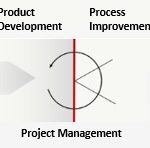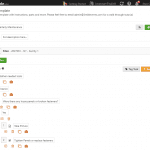
Let’s take a look at how to understand the PM compliance metric. [Read more…]
Your Reliability Engineering Professional Development Site
Find all articles across all article series listed in reverse chronological order.
by George Williams Leave a Comment

Let’s take a look at how to understand the PM compliance metric. [Read more…]
by Nancy Regan Leave a Comment

Who knew that the cooking lessons my Sicilian mother gave me would teach me something about managing physical assets. Join me in Lambertville, New Jersey as I talk about how to properly care for our physical assets. [Read more…]
by Perry Parendo Leave a Comment

Six Sigma has been a business improvement idea for several years now. Debate has existed for some time if the concepts apply to Research and Development. This video breaks down the debate into simple terms. The answer – yes, but not always. Find out why! [Read more…]
by Robert Allen Leave a Comment

A complex production process requires a mixture of leadership, governance and management. In this article, we’ll discuss a tiered meetings structure that can effectively enable this. Empowerment, escalation paths, accountability and responsibility are included as some key ingredients. We’ll start with the following diagram:
by Greg Hutchins Leave a Comment

For the last few months, I’ve been giving talks on the trade war between US and China. A few of these talks have been in the US. Others were skyped to China.
The bottom line is that trade between the US and China has been weaponized.
The Wall Street Journal on December 13, 2018 distilled the challenge:
“… it is questionable whether fragile globalized supply chains can thrive at all in an environment where the world’s two largest economies are disinclines to play by the rules, even their own.”
Our response is that risk (threats and opportunities) is the new lens by which end product manufacturers (brand owners) will have to view China off shoring, on shoring, and sourcing in general. [Read more…]
by George Williams Leave a Comment

Part 2 of our discussion with Sunil Kamerkar from AssetAnalytix. In this segment we discuss the culture of excellence needed to apply analytics and IIoT. [Read more…]
by Carl S. Carlson Leave a Comment

FMEAs take time and cost money. They should be done when a certain level of risk can be effectively addressed by the FMEA procedure. Preliminary Risk Assessment is a procedure that uses company-determined criteria to select which FMEAs to do.
“The key is to schedule your priorities.” ― Steven Covey
by Greg Hutchins Leave a Comment

Guest Post by Geary Sikich (first posted on CERM ® RISK INSIGHTS – reposted here with permission)
We hear so much about global warming, climate change and disruptive weather these days. It is often difficult to understand what is fact, truth and valid from hype, hysteria, and hyperbole. Should we all be driving electric cars, not eating as much meat, using wind and solar; redefining our lives? Or, should we forget about it and continue doing what we have been doing since the early days of the industrial revolution? [Read more…]
by Perry Parendo Leave a Comment

Transformations are useful techniques. Why and how would you use them? The selection process is important, as a well justified choice improves decision making and communication. [Read more…]
by Bryan Christiansen Leave a Comment

Equipment maintenance is a requisite for companies that seek high-performance from their physical assets. If they can leverage a well-executed maintenance strategy, such organizations should gain the expected advantages that reliable assets will deliver such as reductions in operational costs and unplanned shutdowns.
by Nancy Regan Leave a Comment

I never would have thought that a “productivity tip” also held the key to starting (or continuing) your RCM program. Watch as I explain (from Vegas!) how spending only 10 minutes a day can help you achieve greatness with RCM and with your personal and professional life! [Read more…]
by George Williams Leave a Comment

Example of classifications utilization in CMMS. Provides an overview of what classifications and attributes are and some of the places they can be utilized within the CMMS. [Read more…]

Reliability is a process. If the right process is followed, results can be great such as eliminating most of the warranty costs. The opposite is also true in the absence of the right process. There is a saying: “If we don’t know where we are going, that’s where we will go.” It is difficult enough to do the right things, but it is even more difficult to know
what the right things are!
Knowledge of the right things comes from practicing the use of lessons learned. One must utilize the accumulated knowledge for arriving at correct decisions. Theory is not enough. One must keep becoming better by practicing. Take the example of swimming. One cannot learn to swim from books alone; one must practice swimming. It is okay to fail as long as mistakes are the stepping stones to failure prevention. Thomas Edison was reminded that he failed 2000 times before the success of the light bulb. His answer, “I never failed. There were 2000 steps in this process.” We can use the following lessons learned. [Read more…]
by Perry Parendo Leave a Comment

Our training provides experience with practical application, including team building and economic considerations. This testimony captures those experiences. Would you benefit from this training approach? [Read more…]
by Adam Bahret Leave a Comment

My wife (Beth) and I both train and compete in Brazilian Jiu Jitsu. It’s a grappling sport like wrestling. In Jiu Jitsu your Gi (the karate looking uniform) is a big part of the sport. It’s a very heavy fabric with very specific features that are inspected before each match. Many moves involve the GI, especially the jacket. I have wrapped my sleeve around someones neck for a choke, You can grab the end of both of the opponents sleeves and dig your feed into their elbows to lock up their arms and throw them, you can use an opponent’s own lapel and wrap it around their neck for a submission or simply to roll them any way you wish.